The siege of Famagusta and the skin ... Mark Antonio Bragadin
Leonardo da Vinci, who visited Cyprus in 1481, took an active part in designing the fortifications of Famagusta. Well, and the Venetian lions are still on the island!
And it was that, at the height of their power, in February 1570, the Ottoman Empire “ordered” Venice to give it the island of Cyprus - the only Levantine land that remained in the hands of the Europeans. Republic proudly refused, but it meant a war, the result of which was the famous Battle of Lepanto - the most dramatic of the many battles in which Venice participated in order to curb Turkish expansion in the Mediterranean and in Europe.
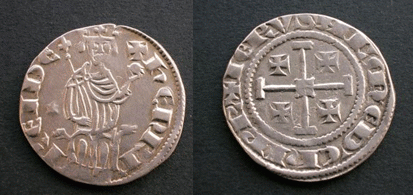
Coin of the time of the rule in Cyprus Henry II de Lusignan.
Famagusta at that time was the flourishing commercial city of Levant, and it was laid three centuries earlier by the French, the veterans of the Crusades. That is why there were so many buildings in a purely Gothic style in it. It was decorated with both palaces and cathedrals, which the Venetians now rushed to shelter from the fire of Turkish cannons with wooden beams and piles of sandbags. On the walls and bastions of the fortress, the Venetians put out 500 cannons of all calibres, to which the Turks responded with a number of cannons exceeding this number threefold! And as always, since the time of the taking of Constantinople, they relied on the huge bombarders who fired stone cores.
That such stone cores at the time and shot! The calculation was also on the fact that the core when hitting something solid scattered into pieces.
But the fortifications of Famagusta, which were built under the guidance of the then famous architect Sanmicheli, were good, if not to say - impregnable. The fortress walls had a length of almost four kilometers, were fortified at the corners with powerful bastions, between which there were ten donjons and were selected by 30 meters wide embankments, which made them impenetrable for any artillery. Inside the mounds were casemates. Inside the fortress, over a dozen “cavalieri” forts (“cavalieri” - “knights” or “horsemen” (Italian)) rose above the walls, surrounded by their own moats, on which counterscarps were trenches for advanced shooters. Finally, the most likely direction of attack was the impressive size of Fort Andruzzi, in front of which just below was another fort - Rivellino.
The gun of those distant years. As you can see, it is iron and for strength is bound with thick hoops. Nearby are iron cores, which the Venetians fired.
The landing operation on the island of Cyprus began on July 1 on the almost unprotected coast between Limassol and Larnaca. After that, the Turkish troops headed deep into the island to the capital Nicosia, which had powerful fortifications and a large garrison, and captured it only two months after the start of the siege. At the same time, the Turks immediately killed all its defenders and a peaceful civilian population: only in one day 1570 was killed there 20 people. Kyrenia - a powerful fortress on the northern part of the island, frightened by this atrocity, then immediately surrendered, although it had orders to fight to the last, and ... the Turks did not touch its inhabitants! Only Famagusta remained. This fortress city rejected the offer to surrender, although everyone understood that the city was clearly doomed to certain death, unless it was provided with urgent assistance by the troops. The fact is that the Turkish army near the city gradually reached the number of 000 people, while the Venetian garrison consisted of no more than seven thousand soldiers.
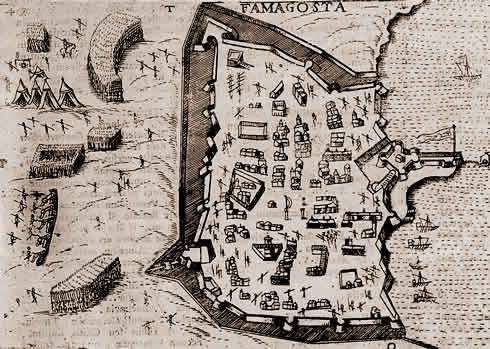
Schematic drawing of the fortress Famagusta 1703 of the year.
Meanwhile, the Venetian government managed to conclude an agreement with Spain, the Papal State and a number of small Italian principalities. The fleet of the newly-born League gathered in the port of Souda (on the island of Crete) at the very beginning of August, in order to then move on to the island of Cyprus. However, when the fleet for 20 September 1570, the year passed half way, the commander of the Spanish squadron Andrea Doria said that the season suitable for navigation, comes to an end, and ordered his ships to return to wintering in Spain. The rest of the captains move to Cyprus without the support of the Spaniards simply did not dare, so the debacade of Famagusta did not take place!
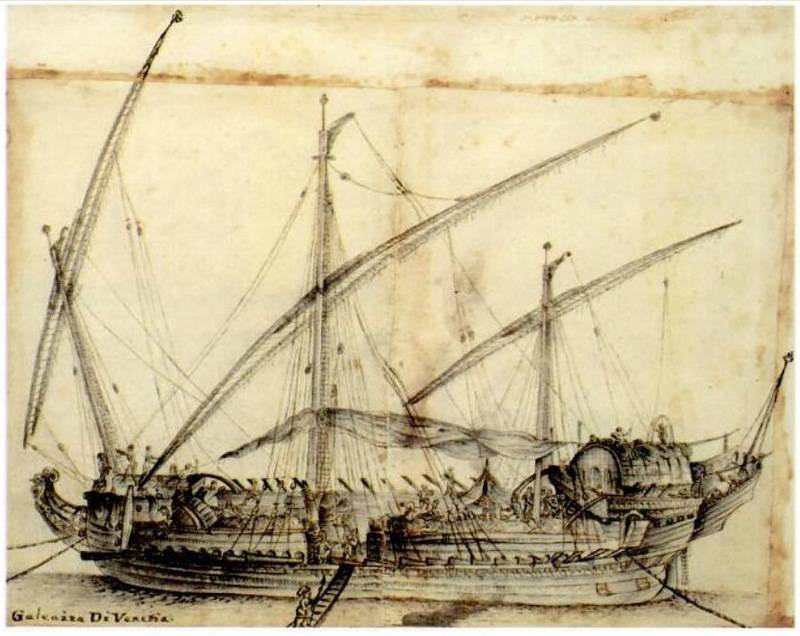
One of the galeasov League.
Girolamo Zane, Commander fleet Republic of San Marco, immediately upon returning to Venice, was almost shamefully demoted, but Famagusta was left without help, the Venetian government sent her the most solemn promises that help was about to come.
The sarcophagus of one of the noble Venetians. In the distance in the square one more stone core of large sizes is visible.
Meanwhile, 19 in May 1500 Turkish guns began shelling, unprecedented in its power, which lasted continuously, day and night for seventy-two days. At the same time, Mustafa began a “mine war”. Turkish sappers began to dig the longest underground tunnels, which were deep under the defensive moat, and laid in them just a huge amount of gunpowder. Whole positions exploded under the feet of the Venetians, and immediately after the explosion the Turks rushed to attack. Particularly serious damage to the Venetians caused two mines: one, exploded on June 21, breached the corner bastion of Arsenal, and the other, which on June June destroyed part of the wall at Fort Rivellino.
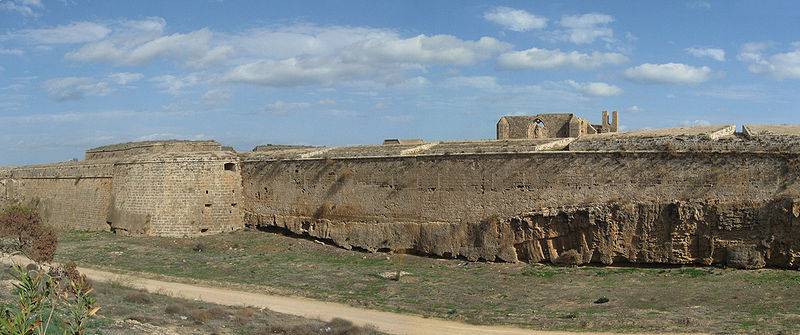
Bastion of sv. Luke in Famagusta.
So went month after month. The garrison fought off all attacks, but it never came to help. For ten months, the garrison of the fortress, day by day by the Venetians, led by the supervisor or the captain-general (we would call him the governor now) Marc Antonio Bragadin, Lorenzo Tiepolo and General Astorre Baloni, confronted the huge Turkish army. One of the attacks was especially hot. The Turks once again blew up a section of the wall. They managed to climb the wall of Fort Rivellino and gain a foothold there. And then Captain Roberto Malvevetstsi ran down the stairs to the basement of the fort, where ammunition was stored. There he set fire to the ignition cord and rushed to the exit, hoping to escape. Then he rushed to the stairs to get out into the air. A few seconds later an explosion followed: from the depths of Rivellino, as if from a volcano, a mixture of fire, stones and earth escaped. The bastion collapsed and crawled into the moat along with the attackers and defenders. It was a hot afternoon on 9 July 1571 of the year and the Turks were so exhausted by the attack and intimidated by the courage of the defenders of Famagusta that they retreated and did not attack anymore on that day. In total, more than a thousand people died at the same time on the bastion! Malvezzi searched and ... found four hundred years later when they excavated at the site of the port of Cyprus. It was then that his nightmarish grave opened - a section of the gallery, which spared the explosion, but which the landslide clogged on both sides. Human remains were found in it, and also a golden ring and a buckle of an officer of the Republic of Venice - all that remained of Roberto Malvezzi, who was trapped there!
When the Turks landed troops in Cyprus, in Venice it caused something like a shock. They even began to build fortifications along the coast, waiting for the next strike right here. Therefore, the Venetians simply could not support Cyprus with troops. But Lala Mustafa, who besieged Famagusta, meanwhile, received very solid reinforcements. Both the island and Famagusta itself would have fallen at the feet of Pasha Mustafa (whose name is the mosque in Famagusta, arranged in the Christian church of St. Nicholas, built under the kings of Lusignan), if both Bragadin and his comrades were not gifted and determined warlords .
Tombstones Turkish commanders in the fort of Larnaca.
The fortifications of Famagusta were so powerful that it can be seen to this day. But reinforcements were needed with manpower from Venice, and hopes for that were weaker every day. From there it was reported: the fleet goes to Messina, where all the forces of the League gather. But ... it was far away. And fierce battles at the walls of the city went every day. And there were already too few people for such a fortress in Famagusta - no more than 2000 people, many of whom were injured! July 31 Mustafa ordered using a powerful mine to blow up the bastion of Arsenal and a large piece of adjacent wall. All the defenders in this area were swallowed up by a huge landslide, but in total darkness there were other Venetians right there, and “they fought not like people, but as giants” (Fustafa then wrote, justifying himself, in a report to the Sultan), and they beat off the onslaught . The Turks met the dawn of 1 in August, completely exhausted, leaving behind a battlefield strewn with the bodies of the dead, among which was Mustafa’s son; and then for the first time the guns fell silent.
Here is a photograph of a stone-enclosed ditch of the Famagusta fortress. To climb the wall, it was necessary to first descend into it, and then climb up. It was hard to do the first even without any war. About the second, and even under the shots, even to think and that was scary.
But in the city the situation was very difficult. Food was coming to an end. Residents of the city openly demanded its surrender. After consulting with other commanders, Bragadin decided to go on negotiations, thankfully, Mustafa himself was the first to contact him with this proposal. But he refused to meet with the Turkish parliamentary in person. Was it a pride or a premonition of their terrible fate? In any case, the fate of him was very cruel, so if he knew what happened to him later, he would certainly have chosen death in battle. But be that as it may, 1 August 1571, the truce was signed and the guns were already silenced.
The plenipotentiary representative Lala Mustafa prepared the act of surrender, in which, among other things, promised in the name of God and the Sultan to observe all the paragraphs of this act. He promised safe transportation of all survivors to Sitia on the island of Crete; unobstructed, under the crash of drums, the passage to the courts of Venetian soldiers, with flying flags, all the cannons, personal weaponsluggage, as well as their wives and children; Cypriots who wished to leave with the Venetians were allowed free travel, as well as full security was guaranteed to those Italians who wanted to stay in Famagusta; and finally, the Cypriots were given two years so that they could decide whether to remain on the island under the rule of the Turks, or move to any other place ... at the expense of the Turkish government. Conditions, as you can see, are very honorable and quite acceptable. Along with this act, Bragadin was also brought security certificates, guaranteeing him and his people to travel to Crete.
This ditch makes not so frightening impression. But imagine that five hundred years ago it was only twice as deep ...
Landing on ships began on August 2, and by the time 5 had all been completed. There was a “trifle”: Bragadin had to give Mustafa the keys to the city. This was the rule of the generally accepted military etiquette of that time, and Mustafa declared that he was ready to meet Bragadin personally for this purpose and would even be honored.
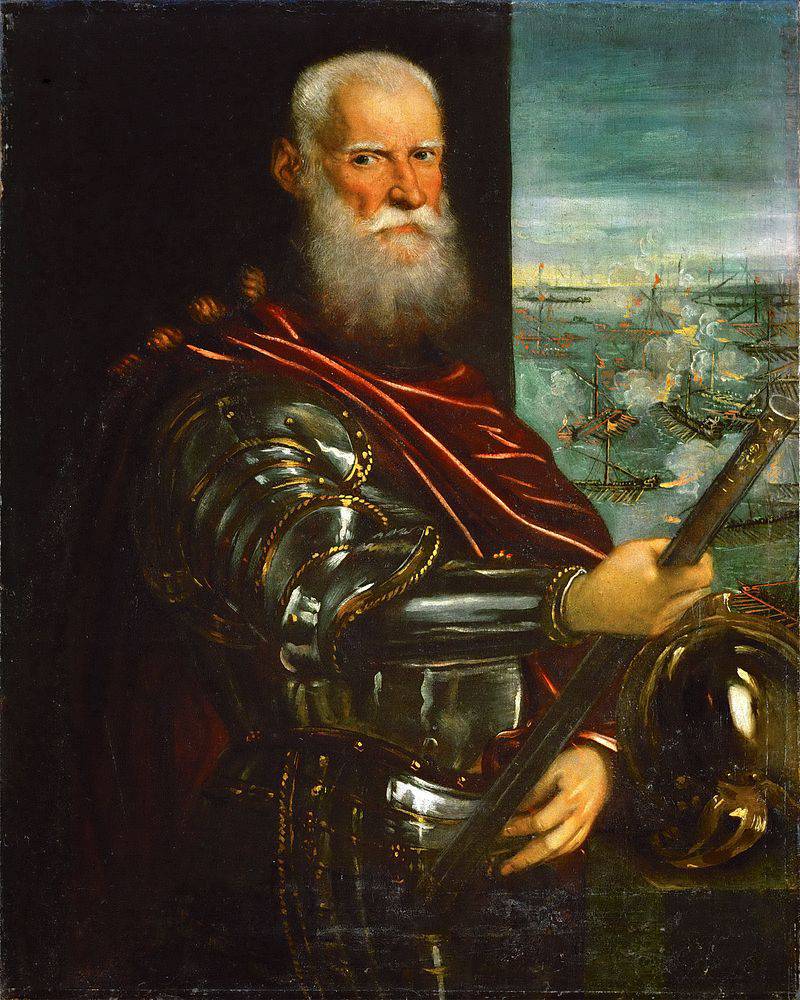
Marc Antonia Bragadin, portrait by Tintoretto.
The welcome given to him and all Venetian commanders was at first very welcoming. Pasha sat down the "guests" in front of him, the conversation began and then, as soon as Bragadin handed him the keys, Pasha suddenly changed his tone and began to accuse the Venetians of the villainous killing of the Turkish slaves who were in the fortress. Then he asked where are the provisions and ammunition stored in the fortress? And when he was told that there was nothing, he finally became infuriated. “Why did you, the dog, not surrender to me the city earlier and ruined so many of my people?” He shouted and ordered all his “guests” to grab, despite the security certificates issued to them. Then he personally cut off Bragadin’s ear, and the second ordered the soldier to be cut off; after which he gave the order to kill all those who came to him in the tent, and Astorre Baloni's severed head showed his army with the words: “This is the head of the great defender Famagusta!”.
Inside the ancient Byzantine churches are painted amazingly beautiful. Probably, the Bragadin soldiers came here, looked at all this and scooped this strength ...
Meanwhile, Turkish soldiers rushed into the city, where they killed all the men in a row and raped Cypriot women; and then attacked ships that were preparing to sail with refugees to Crete. Both women, and children, and men — all were enslaved and sent to the markets of Istanbul, who were rowers to galleys. In front of the tent of Lal Mustafa a whole hill grew from severed heads (more than three hundred and fifty Venetians were killed), and Lorenzo Tiepolo and the Greek captain Manoli Spilioti were first hanged and then quartered; after which their remains were thrown to the dogs.
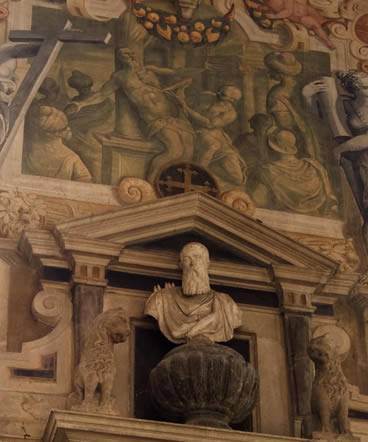
Monument Bragadinu on the place of his rest in Venice.
Bragadinu compared with them, "lucky." Although he lost both ears, but after eight days Mustafa himself, along with one of the muftis, honored him with his visit and ... offered to become a Muslim and thus save his life. In response, he was told that he was a dishonest person, well, and much more, that the furious Pasha did not retell to anyone. But ... Brigadin ordered the execution of the most cruel execution, which only a perverse Turkish fantasy was capable of. On August 15, in order to amuse the army, he was forced to walk several times to the batteries with a huge basket of earth and stones, while the soldiers set footboards for him and laughed when he fell. Then the galleys were tied to a ray, and they were raised so that it was visible to Christian slaves who were on the ships, and shouted: “Do you not see your armada ... do you not see the help of Famagusta? ..” Then from him, naked and tied to a ray, alive, skinned in the presence of Lal Mustafa himself, and the corpse was dismembered into pieces! Moreover, the torment of the victim tried to extend, so that when they tore off his skin to the waist, Bragidin was still alive!
The citadel of the fortress is “the castle of Othello”. The entrance to the citadel is guarded by the winged lion of St. Mark, preserved from the 15th century, a symbol of the Venetian empire.
Then, the skinned parts of the executed hero were distributed between units of the Turkish army — a kind of “fetishism” was practiced in her at that time, and her skin was stuffed with straw, sewn up (all just like in the fairy tale about Ali Baba from Thousand and One Nights) , dressed in clothes and even put a fur hat on their heads. Then this terrible figure on horseback was driven all over Famagusta in order to instill an even greater fear in its already completely demoralized population. Astorre Baloni and General Martinengo, as well as castellan Andrea Bragadin, also carried the skin and heads along the entire Asian coast, until they reached Istanbul.
Cathedral of sv. Nicholas - today the mosque Lala Mustafa Pasha, that is, the Turkish commander for his actions was rewarded "very decent way"!
In Istanbul, the remains of Bragadin ... were "exhibited" for several years, but then they were abducted by Christians (without a doubt, the plot for an adventure novel!) And delivered to Venice. Here they were buried with honors first in the church of St. George, and then reburied in the church of Saints John and Paul, where they are today. Even at that cruel time, disputes arose about what caused the cruelty of the Turkish commander, who justified that Bragadin was guilty of killing Turkish prisoners and that the Venetians on ships could, they say, seize and sell them into slavery by Turkish crews. But, most likely, the reason was in his wounded pride, because his two hundred and fifty thousand soldiers could not cope with a handful of mercenaries, who in comparison with his army really had a handful - 7 thousand people. Moreover, he lost thousands of soldiers near the walls of the city of 52, that is, more than seven people per enemy soldier! However, there was a “good side” in all of this. After hearing stories about the “horrors of Famagusta”, the soldiers of the League at the Battle of Lepanto violently attacked the Turks and at the same time shouted: “Revenge for Bragadin!”
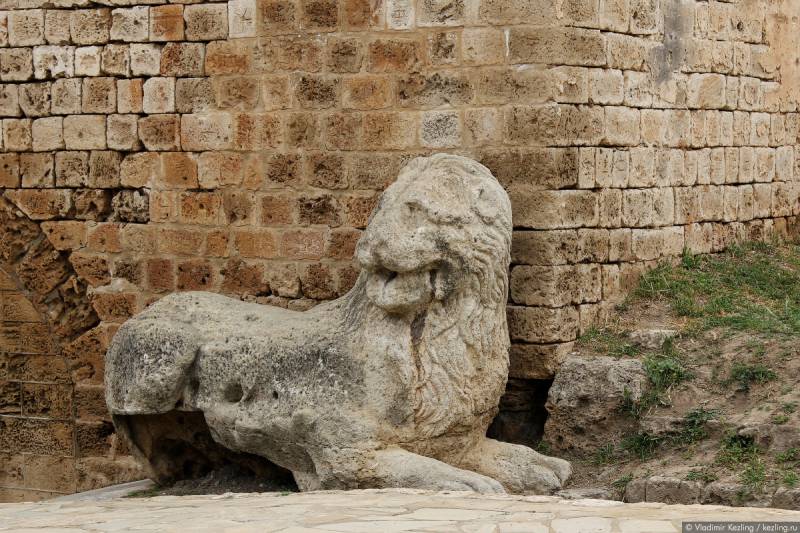
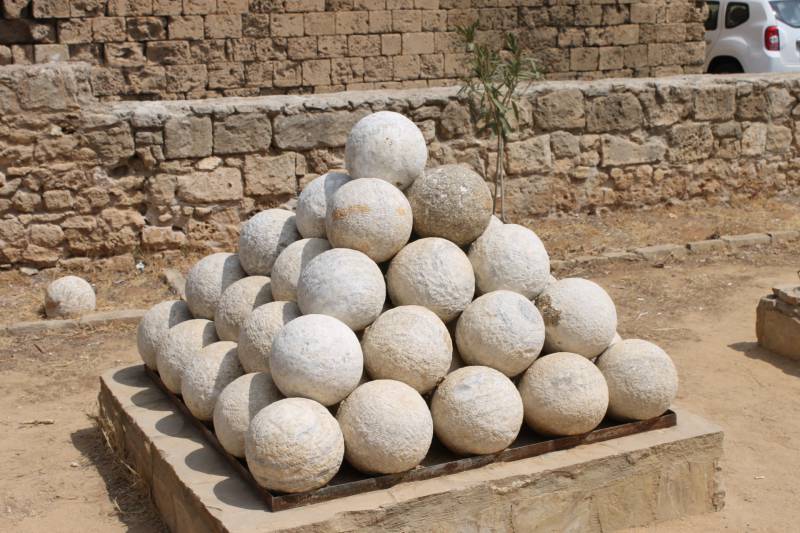
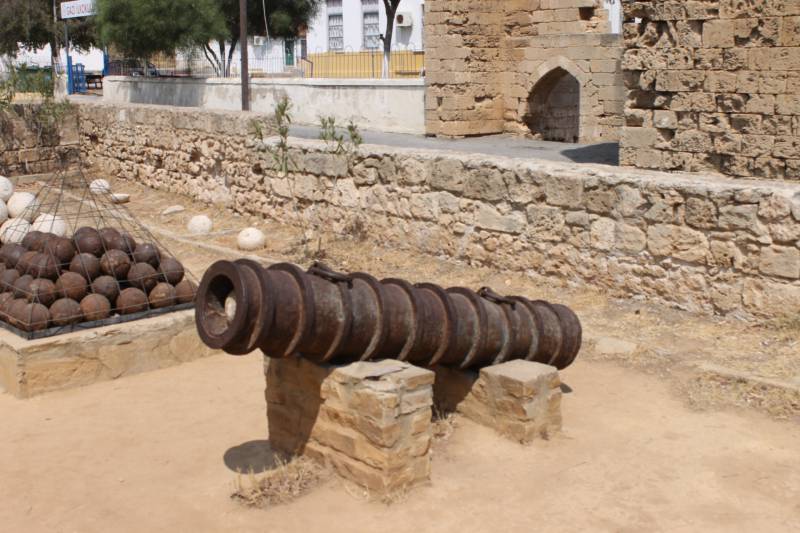
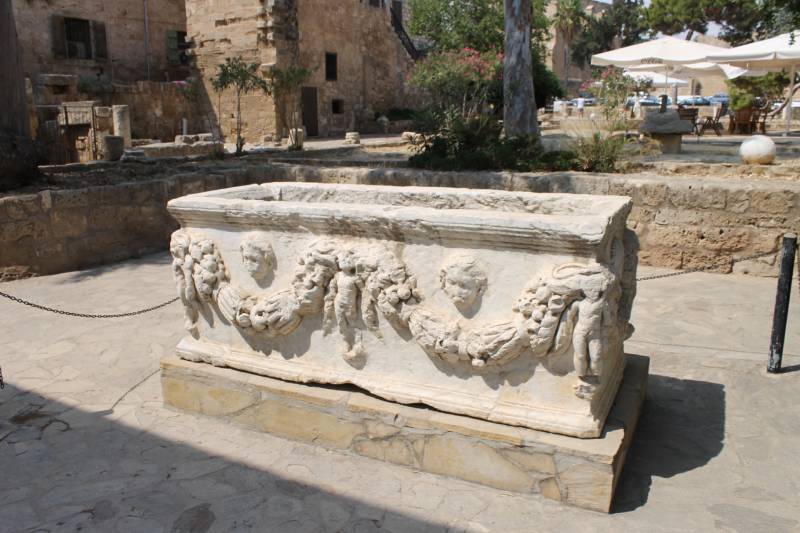
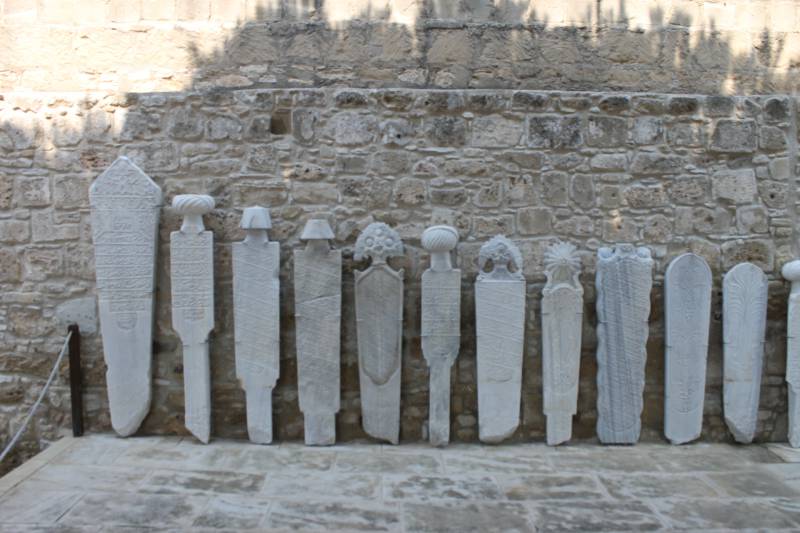
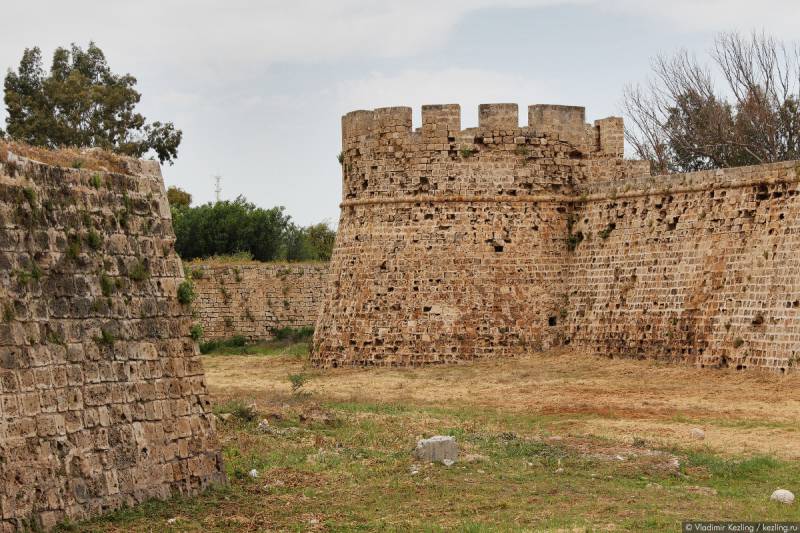
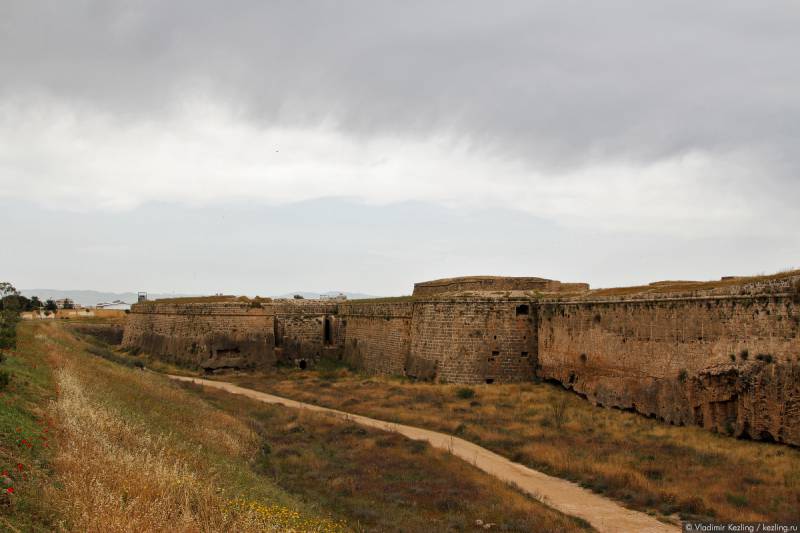
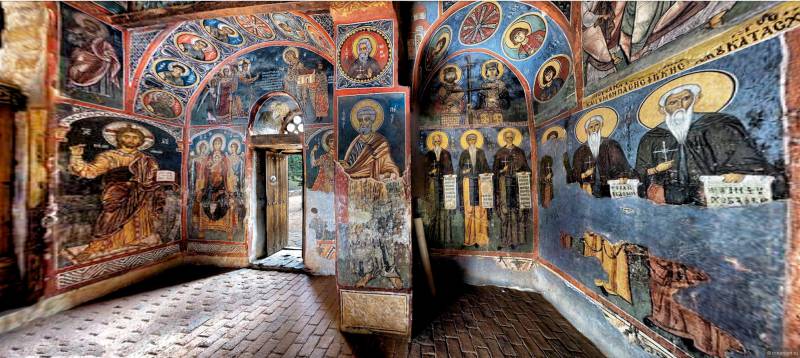
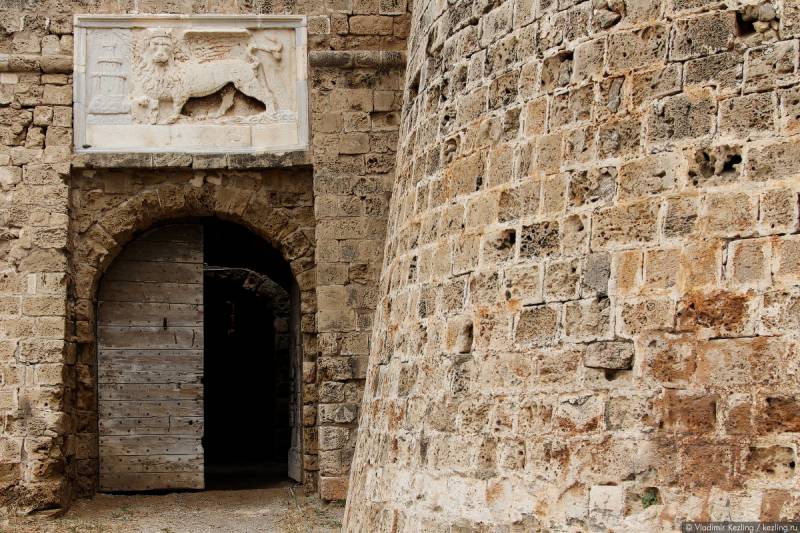
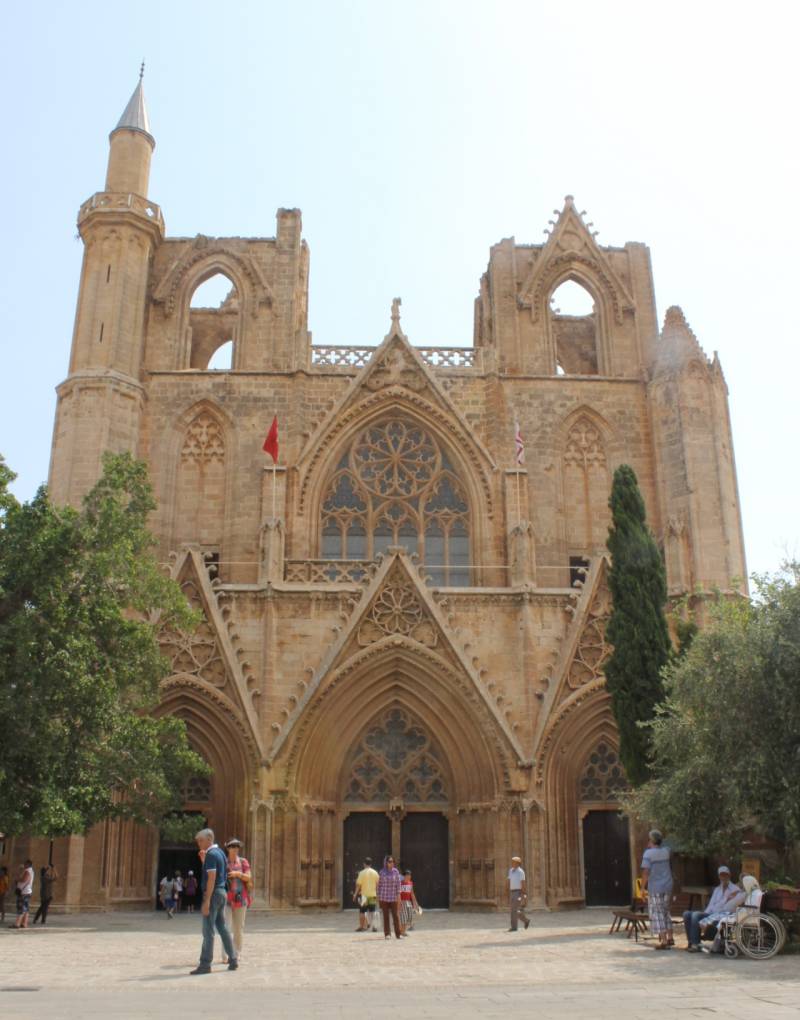
Information